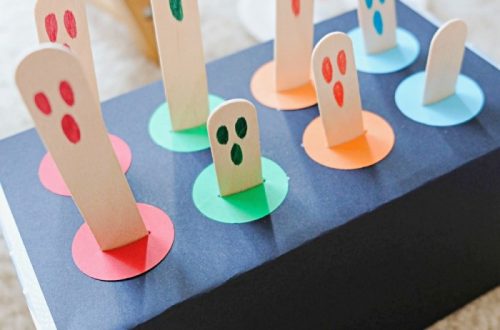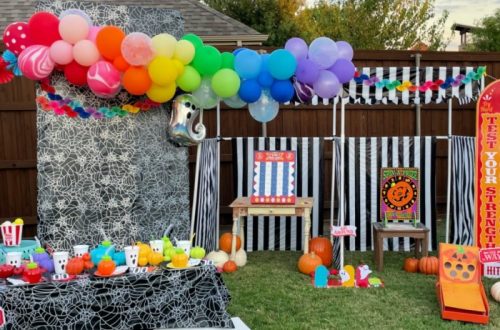Introduction
The Cascadia board game is more than just a fun pastime; it’s an immersive experience that transports players into the beauty of nature. Designed for families, this nature-inspired adventure combines sleek mechanics with stunning artwork that captures the essence of the Pacific Northwest. But what exactly makes this game so appealing, and how can it enhance family game nights? In this guide, we will explore the game’s features, gameplay mechanics, and the benefits of playing together as a family.
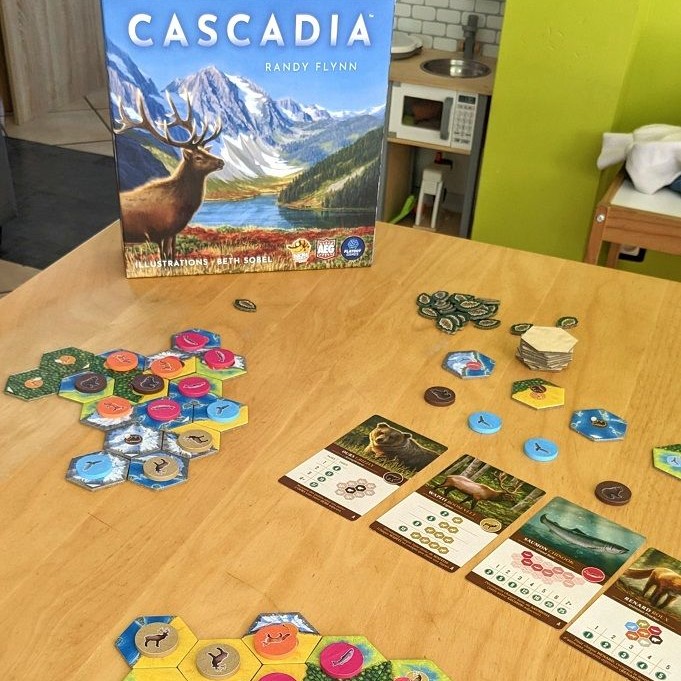
When choosing board games, especially for family gatherings, it’s crucial to find a game that caters to all ages. The Cascadia board game does just that by providing engaging gameplay that is both entertaining and educational. Let’s dive deeper into what this game offers parents and children alike.
Overview and Theme of the Game
Cascadia celebrates the biodiversity of the Pacific Northwest by focusing on its habitats and wildlife. Players compete to design harmonious ecosystems. Each turn involves placing habitat tiles and wildlife tokens strategically to score. The game emphasizes creativity and planning within a relaxing nature-inspired backdrop. Its theme encourages appreciation for ecology and balance.
Who Can Play Cascadia?
Cascadia welcomes players of all ages and skill levels, making it highly accessible. Families love the game for its simplicity and educational value. Competitive gamers enjoy the tactical depth it offers through scoring options. The game supports solo play, two-player mode, and groups up to four. New players find the rules easy to grasp, while experienced gamers appreciate its replayability and evolving strategies.
Game Components and Setup
Cascadia is designed to be easy to learn and enjoyable for all players. Before diving into the gameplay, understanding the components and setup is crucial.
Materials Included in the Box
The Cascadia board game comes with high-quality and eco-friendly materials. These include:
- Habitat Tiles: Hex-shaped tiles representing different landscapes like forests, rivers, and mountains.
- Wildlife Tokens: Circular tokens featuring animals like bears, elk, salmon, hawks, and foxes.
- Scoring Cards: Cards guiding players on how to score points for wildlife patterns.
- Nature Tokens: Small wooden tokens used for strategic adjustments during gameplay.
- Rules Booklet: A clear guide to understanding gameplay, rules, and setup instructions.
- Solo Mode Rule Sheet: Additional rules for playing the game solo.
These components are beautifully illustrated to capture the natural aesthetics of the Pacific Northwest.
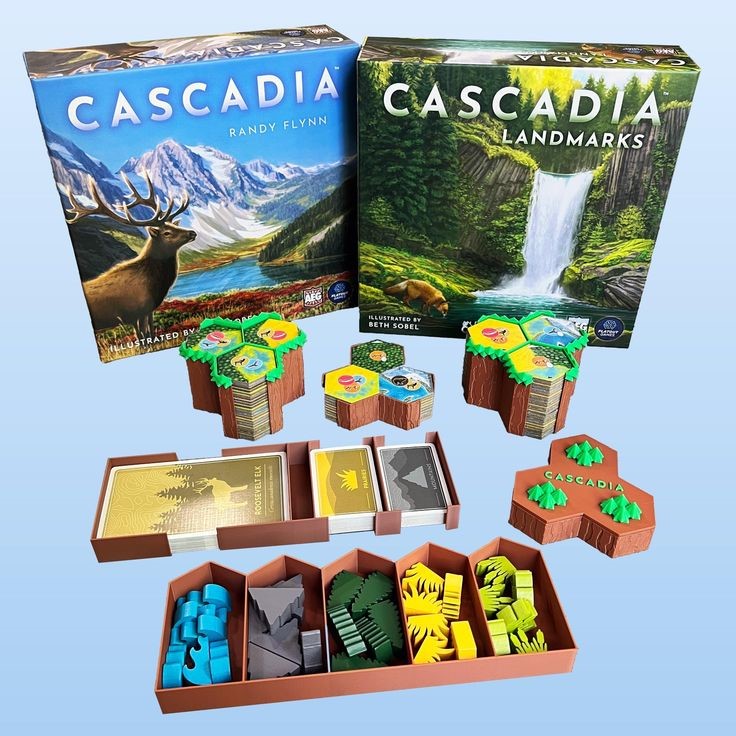
Setting Up the Game for Beginners
Setting up Cascadia is straightforward and quick, even for first-time players. Follow these steps:
- Lay Out Habitat Tiles: Shuffle the habitat tiles and place them in a draw pile.
- Arrange Wildlife Tokens: Create a supply of wildlife tokens and randomly draw four to display.
- Distribute Starter Tiles: Each player receives a set of three initial habitat tiles.
- Prepare Scoring Cards: Select and display one scoring card for each wildlife type.
- Place Nature Tokens Nearby: Keep the nature tokens accessible to all players.
- Start Player Selection: Decide who goes first, then follow a clockwise turn order.
By following these steps, players can prepare for a smooth and enjoyable game experience. Beginners can quickly familiarize themselves with the setup while appreciating the game’s nature-inspired details.
How to Play Cascadia
Cascadia board game invites players to build ecosystems through strategic tile placement and token use. Learning its mechanics is straightforward, ensuring fun for both new and experienced players.
Basic Gameplay Mechanics
In Cascadia, players take turns selecting habitat tiles and wildlife tokens. Each turn consists of these steps:
- Draw a Pair: Choose one habitat tile and one wildlife token from the available options.
- Placement: Place the chosen tile into your ecosystem and assign the wildlife token to it.
- Replenish Options: Replace the habitat tile and wildlife token in the center display.
The goal is to expand habitats and arrange wildlife for optimal scoring. Turns are quick, keeping the game flowing smoothly.
Rules for Tile Placement and Wildlife Tokens
The placement of habitat tiles and wildlife tokens is strategic. Follow these basic rules:
- Habitat Tile Placement: Match edges, aligning landscapes like forests, rivers, or mountains.
- Wildlife Tokens: Assign tokens to tiles that allow the corresponding wildlife to inhabit them.
- Nature Tokens: Use these strategically to swap wildlife tokens from the selection.
Planning placements carefully helps create larger connected habitats and score better wildlife patterns.
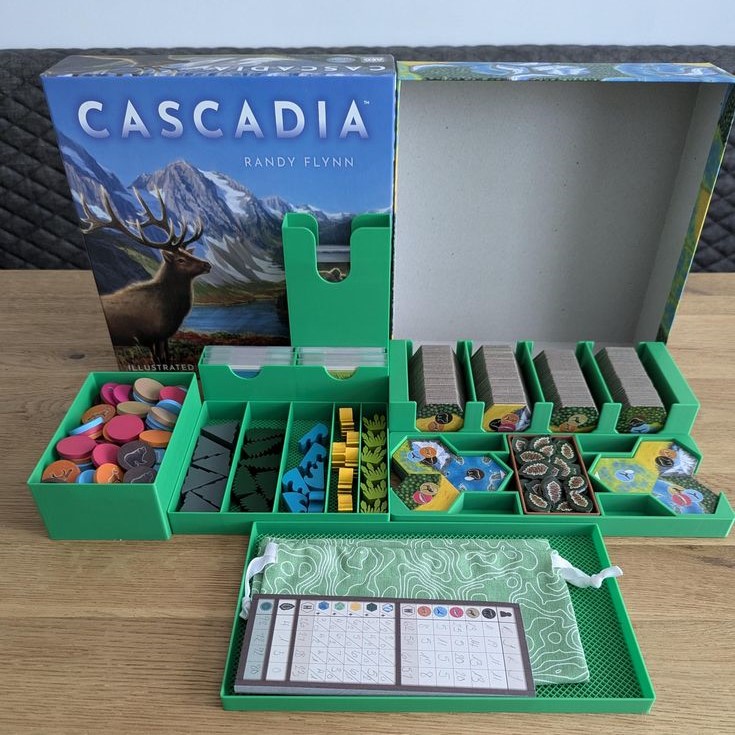
Scoring System Explained
Scoring in Cascadia revolves around two aspects: wildlife patterns and habitat corridors.
- Wildlife Patterns: Each animal has a unique scoring card. For instance, salmon score for creating connected runs.
- Habitat Corridors: Larger connected areas of a single habitat type earn extra points.
- Endgame Bonus: Players may receive additional bonuses depending on specific wildlife cards used.
Final scores are calculated by adding wildlife points, habitat corridor points, and bonuses. The player with the highest score wins.
Mastering these gameplay rules ensures an engaging experience with the Cascadia board game.
Strategies to Excel in Cascadia
Mastering Cascadia requires thoughtful planning and an understanding of its scoring dynamics. Strategic placement of habitat tiles and wildlife tokens is key to winning. Below, we provide actionable tips.
Tips for Optimizing Tile Placement
To excel in Cascadia, optimizing tile placement is crucial. Here are some effective strategies:
- Plan Ahead: Always think a few turns ahead. Focus on creating larger connected habitats. This increases your habitat corridor score.
- Match Edges Correctly: Align habitat edges, like rivers or forests, to build continuous geographical regions. This enhances scoring opportunities.
- Target Versatile Placements: Place tiles that support multiple types of wildlife. This flexibility improves your scoring options.
- Utilize Nature Tokens: Use nature tokens to replace unwanted tiles. This ensures optimal placement for your strategy.
- Adapt to Opponents’ Choices: Stay flexible with placements by observing rival strategies. Avoid fixation on a single plan.
By applying these tips, you can maximize your ecosystem’s efficiency and scoring potential.
Wildlife Patterns and Scoring Maximization
Scoring in Cascadia depends heavily on wildlife patterns. Here’s how to maximize points:
- Understand Scoring Cards: Each animal type has a scoring card with unique patterns. Learn their rules to strategize better.
- Focus on High-Value Combinations: Create runs, clusters, or specific formations based on wildlife scoring requirements.
- Diversify Wildlife Placements: Work on multiple wildlife types to keep your scoring options open.
- Use Strategic Sacrifices: Sometimes, placing a token for lower immediate points can lead to higher scores later.
- Capitalize on Bonuses: Aim for endgame bonuses by achieving extra conditions listed on the wildlife cards.
Optimal wildlife arrangements paired with tile strategies can significantly boost your final score. Always balance habitat building with pattern priorities to outscore opponents.
Expanding the Experience
Cascadia offers players more than just its base game. It provides ways to diversify gameplay and keep the excitement fresh. Let’s explore some interesting variants and challenges, as well as the engaging solo mode.
Variants and Challenges in Cascadia
Cascadia includes optional game variants that add depth and excitement. These are perfect for those seeking additional challenges:
- Variant Scoring Cards: Replace the standard scoring cards with advanced ones for increased complexity and strategy.
- Achievements: Set personal goals or milestones, such as completing certain habitat patterns.
- Dynamic Nature Tokens: Use nature tokens with modified rules to create more unpredictable turns.
- Custom Challenges: Experiment with designing your own rules or constraints to increase difficulty.
- Time-Limited Play: Introduce a timer for turns to keep the pace brisk and test quick decision-making skills.
These options help keep the game enjoyable for seasoned players and encourage creative thinking.
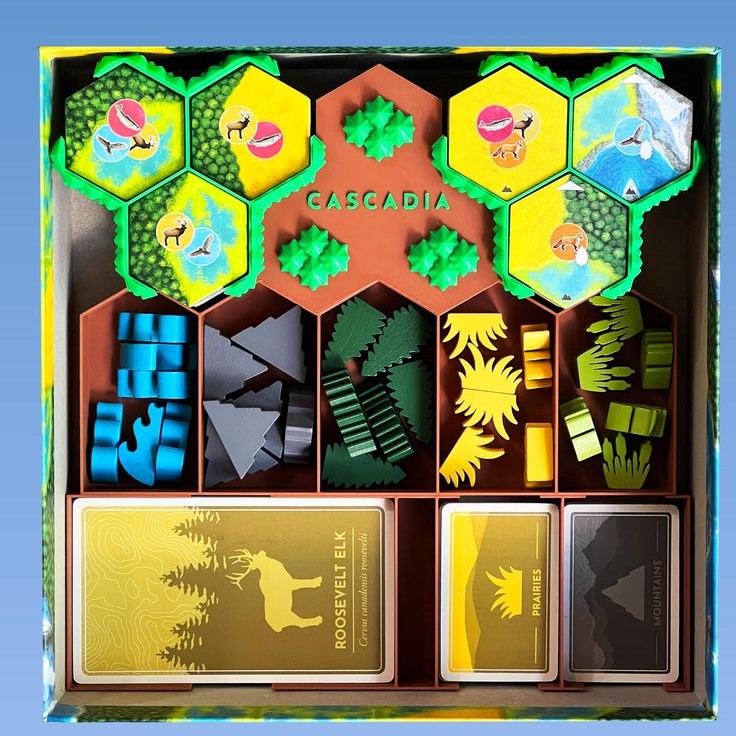
Playing Solo: The Solo Mode Explained
The Cascadia board game shines even in solo mode. Solo play focuses on beating your own previous scores:
- Solo-Specific Rules: Use the solo rule sheet included in the box. It offers clear instructions tailored for one player.
- Personalized Scoring: Aim to achieve higher scores each time you play. Compete against your personal best.
- Adaptive Gameplay: Solo mode adjusts the challenge by limiting available tiles and tokens strategically.
- Simplified Setup: Setup for solo play is quick, requiring only one player board and fewer components.
- Perfect for Practice: Learn new strategies and test scoring patterns in a stress-free, competitive-free setting.
Solo gameplay captures the essence of Cascadia while offering a unique and immersive experience.
Why Cascadia Stands Out
Cascadia has gained a reputation as a standout board game for multiple reasons. It combines strategic depth with a relaxing theme, creating a unique mix that players love. Its themes of nature and ecology offer something truly special in the realm of tabletop games. Below, we explore some of the key features that make Cascadia shine.
Unique Features That Appeal to Players
Cascadia’s appeal lies in its clever design and attention to detail. Here are some standout features:
- Nature-Inspired Theme: Cascadia immerses players in the beauty of the Pacific Northwest, celebrating wildlife and landscapes.
- Simple Yet Strategic Gameplay: It balances straightforward rules with opportunities for in-depth strategy, appealing to all skill levels.
- High-Quality Components: The game features beautifully illustrated habitat tiles and wildlife tokens, enhancing the experience.
- Replayability: Different combinations of scoring cards ensure each game feels fresh and challenging.
- Accessibility: Cascadia’s rules are easy to learn, making it ideal for families and new board gamers.
- Solo Mode: The game offers a rewarding solo experience with tailored challenges for individual players.
These features combine to create a game that is engaging and welcoming, whether you’re a casual player or a competitive one.
Environmental and Educational Aspects
Cascadia is more than just a game; it’s a lesson in ecology:
- Ecological Awareness: The gameplay highlights the importance of biodiversity and balanced ecosystems.
- Educational Scoring Mechanics: Players learn about animal patterns, habitats, and their interactions through the strategies they apply.
- Sustainability: The game uses eco-friendly materials, aligning its production with its nature-focused theme.
- Inspiring Conversations: Cascadia often sparks discussions about conservation and the natural world, making it a valuable tool for educators.
By blending entertainment with education, Cascadia encourages players to appreciate and respect the environment. It’s a board game that leaves a lasting impression on both newcomers and seasoned enthusiasts.
Reviews and Reception
Cascadia has garnered widespread acclaim in the board gaming community. Its blend of strategy, accessibility, and aesthetics has made it a favorite for players of all skill levels. Let’s explore its recognition and feedback to understand why it’s so beloved.
Awards and Recognitions
Cascadia has received several prestigious awards, showcasing its excellence in design and gameplay:
- Spiel des Jahres 2022 Winner: This is one of the highest honors in the board game industry, recognizing games with exceptional accessibility and gameplay.
- Mensa Select Winner: The recognition highlights its clever mechanics that appeal to problem-solving and strategic thinkers.
- American Tabletop Award (2022): This award showcased Cascadia’s engaging and family-friendly appeal.
- Golden Geek Awards: Cascadia was nominated or won in categories such as Best Family Game, recognizing its wide audience appeal.
These accolades emphasize its universal charm and innovative approach to ecological themes.
Feedback from Board Game Enthusiasts
Players and critics have praised Cascadia for its thoughtful design and enjoyable experience. Here are some recurring points:
- Strategic Depth with Simplicity: Players appreciate the balance of strategic choices and easy-to-learn rules. It offers a rich experience for both new and seasoned gamers.
- Relaxing Gameplay: Board game enthusiasts often describe playing Cascadia as calming and inspiring, thanks to its nature theme.
- High Replayability: The randomized scoring cards ensure no two games feel the same, keeping it fresh.
- Educational Value: Many players commend how Cascadia subtly teaches ecological concepts and promotes wildlife appreciation.
- Family-Friendly Fun: Families highlight its accessibility for adults and kids, making it great for quality group time.
Critics have also noted its eco-friendly materials, sleek design, and clever mechanics, which boost its overall appeal. Cascadia continues to maintain its standing as a must-have game in any board game collection.
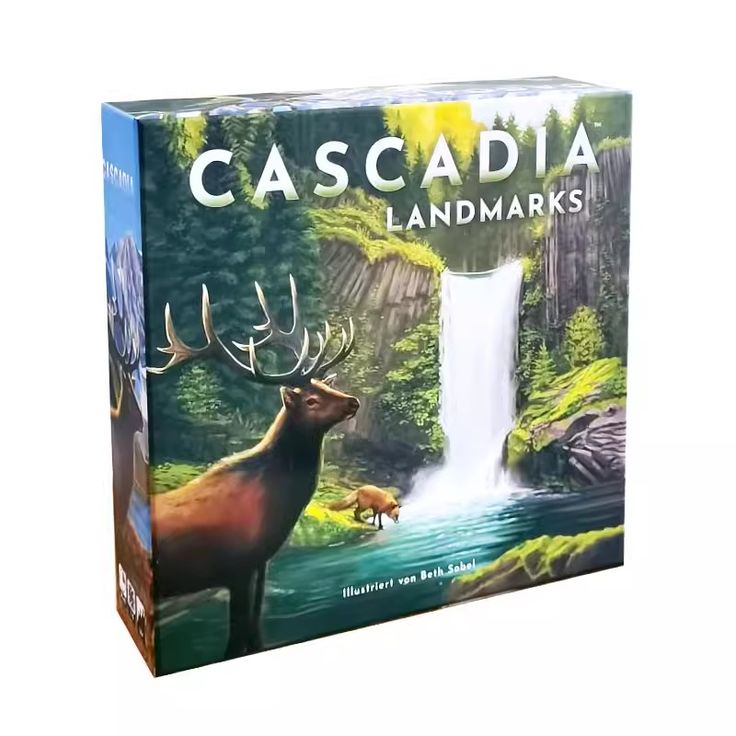
Final Thoughts
In conclusion, the Cascadia board game is more than a mere collection of boards and pieces; it is a gateway to adventure, learning, and family bonding. With its nature-inspired theme, elegant design, and easy-to-understand mechanics, it serves as the perfect backdrop for countless family game nights.
As families come together for quality time, choices like the Cascadia board game cater to various interests while promoting essential skills and environmental awareness. So gather your loved ones, embrace the beauty of nature, and embark on your adventure today!


